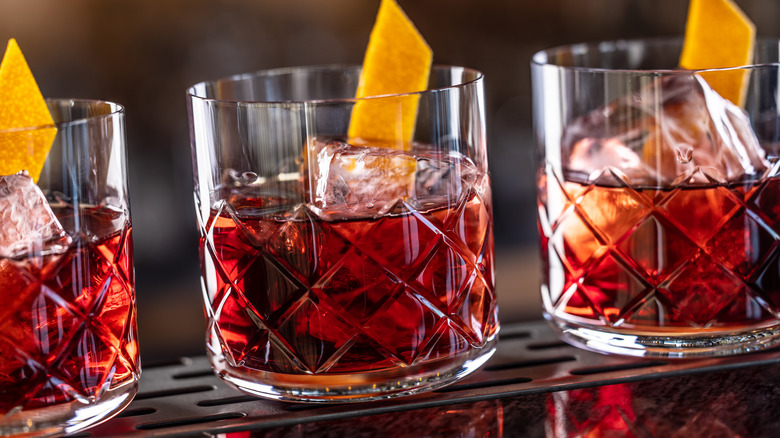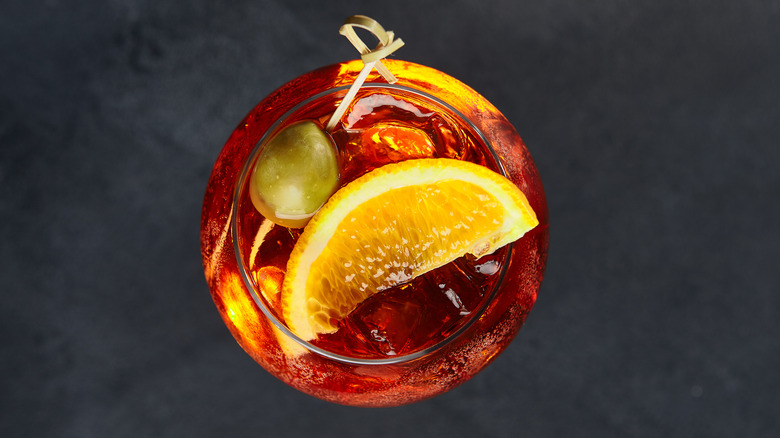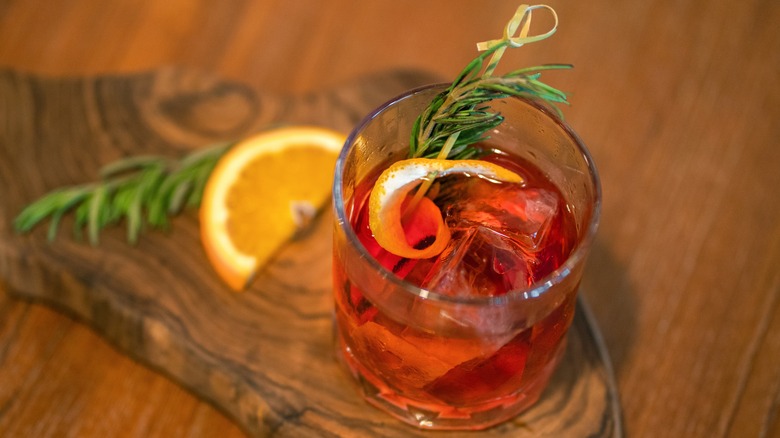The Difference Between A Dirty Negroni And The Classic Cocktail
The Negroni has become a nearly undisputed ruler of the cocktail realm in recent years, spiking in popularity and nabbing a top spot in the ranking of the world's most sold drinks. For lovers of bitter flavors, it's easy to understand why Negroni fever has swept bar and restaurant cocktail programs. It's a drink that strikes a perfect balance between the biting Campari, sweet vermouth, and herbaceous gin.
Like all popular creations though, people love to take a shot at personalizing the classic Negroni cocktail. It's especially easy given its super simple equal-parts framework, and existing variations like the Negroni sbagliato, Milano-Torino, and Americano provide further inspiration. But the latest incarnation of the Italian mainstay actually calls to mind another cocktail icon — the martini.
Martini loyalists know that when they order their drink, requesting that it be prepared "dirty" means that it will come dosed with olive brine. Different versions of the dirty Negroni exist, but a similar principle applies to most in that it will incorporate the savory, briny, salty character of olives. If that sounds a little odd to you, rest assured, there's good reason — and plenty of ways — to get dirty.
Why and how a dirty Negroni works
If you've ever had olives prepared with orange zest and spices, you may be able to imagine how well the flavors of citrusy Campari, botanical-infused gin, and spicy vermouth pair with brininess. Salt and bitterness also have a unique relationship, in that the former mutes the latter. And since salt always enhances flavor, the nuances of the classic Negroni that may otherwise be more subtle beneath its bitterness get a chance to really pop in the dirty version.
You can try a few methods to dirty up your Negroni. An olive oil-washed gin infuses the flavor into the spirit, while a simple saline solution can also bring brininess throughout, and you can even source olive bitters for depth. Any one of these methods will make an interesting layer of flavor, but you can also combine all three if you want to get extra dirty.
If you'd prefer to hew closer to the martini-meets-Negroni vibe, you can simply add a little olive brine to your drink. This is more common of a white Negroni, which is made with two kinds of dry vermouth and no Campari (hence the "white" moniker), and if you're not someone who snacks on olives but still likes the idea of this twist, you can purchase cans of pure brine from Gordy's Pickle Jar, specifically made for mixing purposes.
Dirtying up your drink
Once you know the difference between the classic Negroni and the dirty version, you can play with some options of your own. Borrow from the hot and dirty martini and rim the glass in spicy Tajin, or add a little Ancho Reyes Verde made from green chiles to double down on the savory quality, and also give it a kick. Grilling your olive garnish can infuse your cocktail with a little smoky character, but you can also easily add herbs like rosemary as a garnish — all of which are complementary flavors.
Being that the bartop is basically a grown-up playground, there are some other Negroni variations being concocted and paraded around as "dirty," too. One version calls for cold brew, while another interpretation substitutes the artichoke-based amaro Cynar as the bitter element. You can certainly decide how to put a spin on the classic Negroni yourself, but the dirty distinction for a Negroni is decidedly a deliciously briny one.


